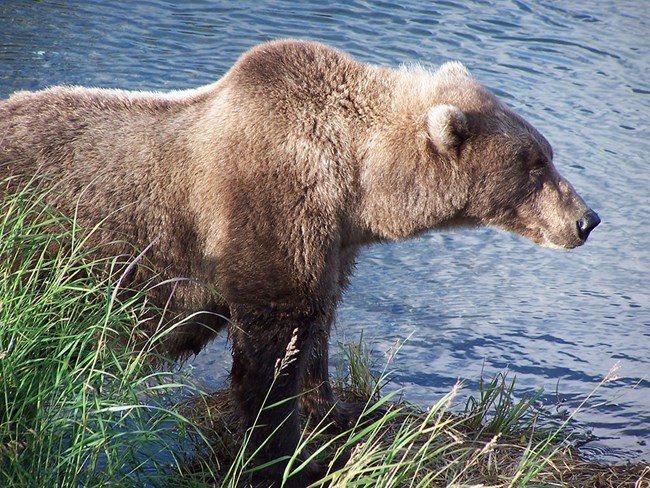Last updated: May 1, 2023
Article
Parasites in Alaska Brown Bears

A team of researchers from numerous universities and state and federal agencies documented the prevalence of parasites in brown bears that could potentially affect wildlife health throughout Alaska. Using samples collected from the temperate rainforests of southeast Alaska to tundra above the Arctic Circle, scientists looked for a diverse array of parasites including those that may infect the intestines, blood, or skin of affected bears. Scientists found parasites to be relatively uncommon, which may be due, in part, to the remote, wild, and healthy populations sampled. Intestinal parasites, including hook worms, roundworms, and tapeworms, were most commonly detected in Alaska brown bears. Scientists also found evidence for exposure to mites affecting the skin. Researchers did not find evidence for blood parasites among the samples tested. Given that parasites can influence the health of individuals, as well populations, this study provides important contemporary baseline for researchers to assess changes through time and relative to ecological changes.
Survey for Selected Parasites in Alaska Brown Bears (Ursus arctos)
Abstract
To assess infection with or exposure to endo- and ectoparasites in Alaska brown bears (Ursus arctos), blood and fecal samples were collected during 2013–17 from five locations: Gates of the Arctic National Park and Preserve; Katmai National Park; Lake Clark National Park and Preserve; Yakutat Forelands; and Kodiak Island. Standard fecal centrifugal flotation was used to screen for gastrointestinal parasites, molecular techniques were used to test blood for the presence of Bartonella and Babesia spp., and an ELISA was used to detect antibodies to Sarcoptes scabiei, a species of mite recently associated with mange in American black bears (Ursus americanus). From fecal flotations (n=160), we identified the following helminth eggs: Uncinaria sp. (n=16, 10.0%), Baylisascaris sp. (n=5, 3.1%), Dibothriocephalus sp. (n=2, 1.2%), and taeniid-type eggs (n=1, 0.6%). Molecular screening for intraerythrocytic parasites (Babesia spp.) and intracellular bacteria (Bartonella spp.) was negative for all bears tested. We detected antibodies to S. scabiei in six of 59 (10.2%) individuals. The relatively low level of parasite detection in this study meets expectations for brown bear populations living in large, relatively undisturbed habitats near the northern edge of the range. These results provide a contemporary understanding of parasites in Alaska brown bears and establish baseline levels of parasite presence to monitor for changes over time and relative to ecologic alterations.
Haynes, E., S. Coker, M. J. Yabsley, K. D. Niedrighaus, A. M. Ramey, G. G. Verocai, G. V. Hilderbrand, K. Joly, D. D. Gustine, B. Mangipane, W. B. Leacock, A. P. Crupi, and C. A. Cleveland. 2023. Survey for selected parasites in Alaska brown bears (Ursus arctos). Journal of Wildlife Diseases 59 (1): 186-191.
DOI: 10.7589/JWD-D-22-00070.
